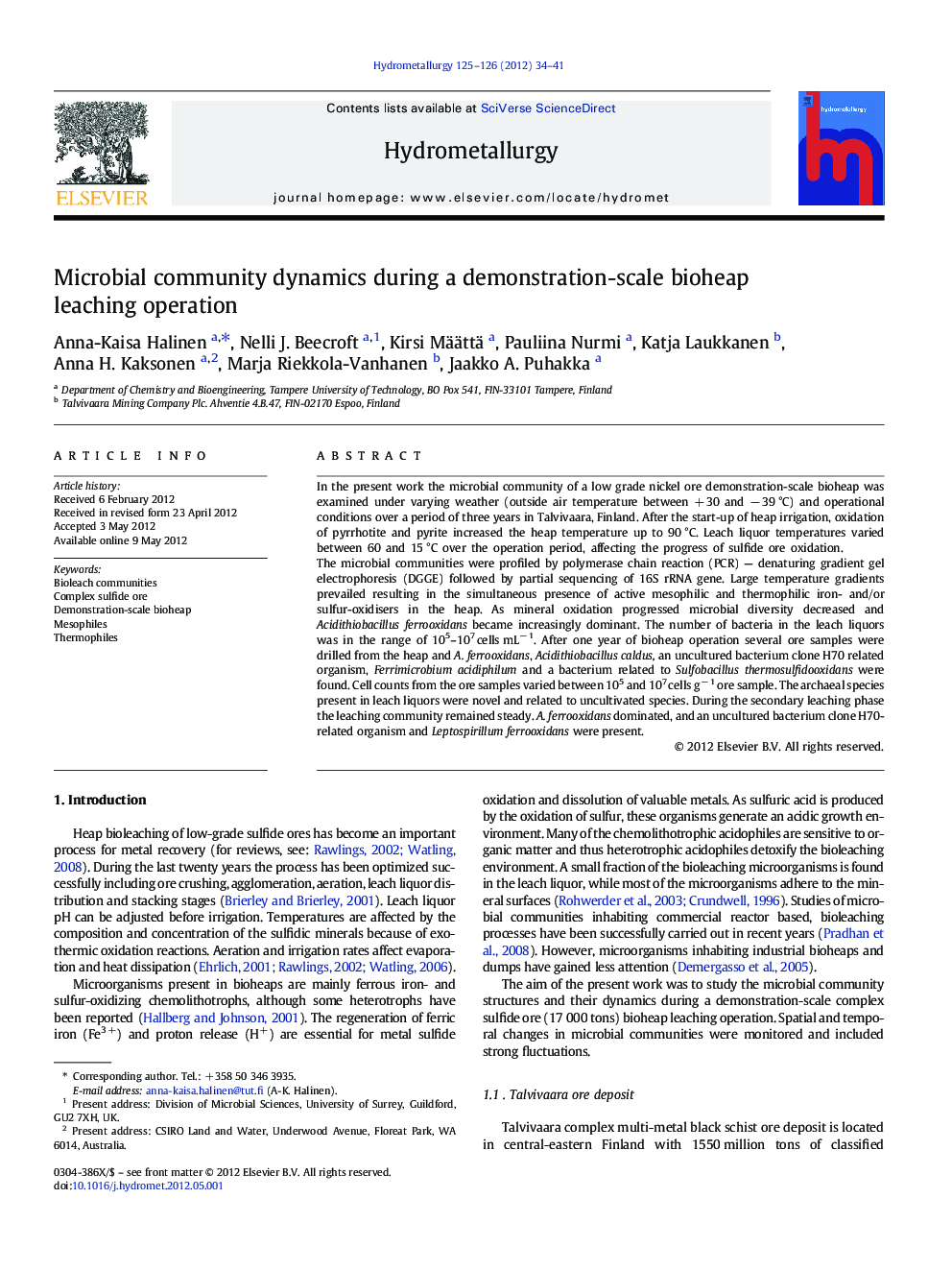| کد مقاله | کد نشریه | سال انتشار | مقاله انگلیسی | نسخه تمام متن |
|---|---|---|---|---|
| 212460 | 462050 | 2012 | 8 صفحه PDF | دانلود رایگان |

In the present work the microbial community of a low grade nickel ore demonstration-scale bioheap was examined under varying weather (outside air temperature between + 30 and − 39 °C) and operational conditions over a period of three years in Talvivaara, Finland. After the start-up of heap irrigation, oxidation of pyrrhotite and pyrite increased the heap temperature up to 90 °C. Leach liquor temperatures varied between 60 and 15 °C over the operation period, affecting the progress of sulfide ore oxidation.The microbial communities were profiled by polymerase chain reaction (PCR) — denaturing gradient gel electrophoresis (DGGE) followed by partial sequencing of 16S rRNA gene. Large temperature gradients prevailed resulting in the simultaneous presence of active mesophilic and thermophilic iron- and/or sulfur-oxidisers in the heap. As mineral oxidation progressed microbial diversity decreased and Acidithiobacillus ferrooxidans became increasingly dominant. The number of bacteria in the leach liquors was in the range of 105–107 cells mL− 1. After one year of bioheap operation several ore samples were drilled from the heap and A. ferrooxidans, Acidithiobacillus caldus, an uncultured bacterium clone H70 related organism, Ferrimicrobium acidiphilum and a bacterium related to Sulfobacillus thermosulfidooxidans were found. Cell counts from the ore samples varied between 105 and 107 cells g− 1 ore sample. The archaeal species present in leach liquors were novel and related to uncultivated species. During the secondary leaching phase the leaching community remained steady. A. ferrooxidans dominated, and an uncultured bacterium clone H70-related organism and Leptospirillum ferrooxidans were present.
► Large temperature gradients (90-15 ºC) prevailed.
► At the beginning microbial communities were diverse.
► With the time microbial diversity varied and decreased.
► Over 98% of the microbial cells were estimated to be on the ore surfaces.
Journal: Hydrometallurgy - Volumes 125–126, August 2012, Pages 34–41